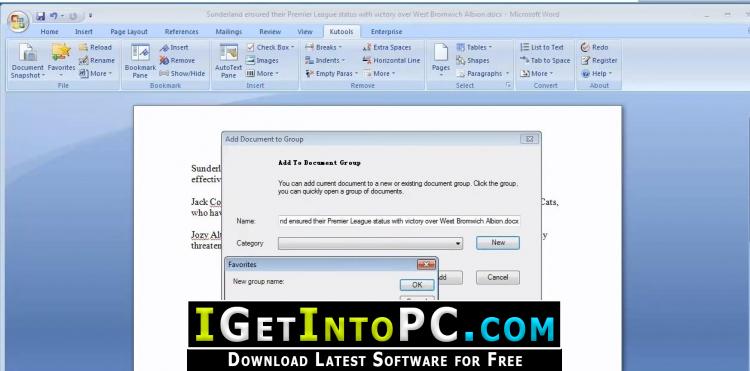
ResolutionĮxcel expert users who work with complex Excel worksheets can benefit from using the 64-bit edition of Office 2013/2016. This situation results in the error message that is mentioned in the "Symptoms" section. Because Excel loads the worksheet into addressable memory, some worksheets that have a file size of less than 2 GB may still require Excel to use more than 2 GB of addressable memory. The size of the worksheet itself also affects the usage of virtual address space.

For Excel, this space is shared by the Excel application itself together with any add-ins that run in the same process. The limit of virtual address space for 32-bit editions of Windows-based applications is 2 gigabytes (GB). Using a 64-bit version of Microsoft Excel.Īlthough improvements in Office 2013/2016 did not significantly affect system requirements, Office 2013/2016 does use more available system resources than Office 2010 did. To increase memory availability, consider: Try using less data or closing other applications. When you are working with an Excel worksheet, you receive the following error message: There isn't enough memory to complete this action. When you insert columns in an Excel workbook, you receive an error about available memory. You can no longer open as many Excel workbooks in the same instance as you could before you upgraded to Excel. The computer uses more memory when you open multiple Microsoft Excel files, save Excel files, or make calculations in Excel workbooks.
#KUTOOLS FOR EXCEL 2013 NOT SHOWING UP UPGRADE#
SymptomsĪfter you upgrade to Microsoft Office 2013 or 2016, you experience one or more of the following symptoms: For more information about this change, read this blog post. That is an entirely different kettle to boil, as Conditional Formatting doesn't really give you anything you can latch onto easily.Office 365 ProPlus is being renamed to Microsoft 365 Apps for enterprise. They will not work with cells that are colored using Conditional Formatting. One final note-the ideas in this tip work fine if you are working with cells that are explicitly filled with colors. You can find more information on the add-on here: One such add-on suggested by readers is Kutools for Excel. There are also some third-party add-ons available that you could use. Here are a few other websites that contain information that may be helpful in this regard: There are, of course, many different ways you could approach the problem and develop user-defined functions such as CountColorIf. It seems that Excel doesn't do an automatic recalculation after changing background color. It should be noted that if you change the color in a cell in your calendar, then you'll need to do something to force a recalculation of the worksheet.

If the calendar is located in cells A1:G6, then you could use the following to get the count of purple cells: For instance, let's say that cell A57 is formatted with the same purple background color you use in your calendar cells. In order to use the macro, all you need to do is provide a cell that has the background color you want tested and the range to be tested. One such macro is CountColorIf:įunction CountColorIf(rSample As Range, rArea As Range) As Long In these instances, you would do better to create a user-defined function that examines the cells and returns a count. Or, you may want the count so you can use it in a different calculation of some type. Of course, these steps might get tedious if you want to count more than a color or two. Click Close to dismiss the Find and Replace dialog box.The Find and Replace dialog box expands to list all cells matching the format, and there is a count of the cells at the bottom of the dialog box. (In other words, click on a purple cell.) The mouse pointer returns to normal.

Click on a cell that is formatted like those you want to find.

#KUTOOLS FOR EXCEL 2013 NOT SHOWING UP PLUS#
The Find Format dialog box disappears and the mouse pointer changes to a plus sign with an eyedropper next to it.


 0 kommentar(er)
0 kommentar(er)
